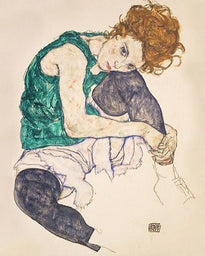Exploring Lodhi Colony with Ikka Dukka

Walking around Lodhi Colony on a weekend is an experience like no other. The streets exude a serene calmness, beckoning visitors into a world of vibrant culture and creativity. As I explore the neighbourhood, it becomes evident that Lodhi Colony stands apart from other areas in New Delhi. The streets are noticeably cleaner, the traffic almost silent, and the population evenly dispersed, creating a peaceful ambience that is a treat for all five senses. However, the true highlight of wandering through Lodhi Colony is the captivating wall art that adorns its every corner. Each mural tells a unique story, bursting with vibrant colours and intriguing details. It's a visual feast that adds an extra layer of charm to this already enchanting neighbourhood.


Lodhi Colony traces its origins back to the 1940s when it was developed as a residential zone for government employees during the British Raj. As part of Lutyens’ Delhi, one of the city’s most prestigious neighbourhoods, it bears the architectural imprint of British architect Sir Edwin Lutyens. Notably, Lodhi Colony was the last housing estate built by the British in India, marking the culmination of their urban planning efforts in the region. The neighbourhood derives its name from the nearby Lodhi Gardens, adding a touch of historical significance to its identity. Over the years, Lodhi Colony has evolved into a vibrant community with a range of amenities. In 2015 the St+Art India Foundation invited 50 renowned street artists from around the world to create the Lodhi Art District. This initiative has turned Lodhi Colony into India's first art district, attracting visitors from all walks of life.

I found that the best way to truly experience Lodhi Colony was to explore it on foot. Everywhere I turned, I encountered walls adorned with captivating art, tucked away in corners or proudly displayed along the main streets. While the area exudes a sense of grandeur, there's also a humbling simplicity that permeates its atmosphere. Lodhi Colony caters to everyone's tastes and preferences. On one strip, I discovered a cluster of street food vendors offering Delhi's finest delicacies like butter chicken, chole bhature, and refreshing pineapple juice. I stumbled upon a friendly vendor selling fresh coconut water. With the Delhi heat starting to intensify, I couldn't resist the temptation and decided to quench my thirst at his stand. As I sat sipping my coconut water, I realised that moment was my favourite part of the day as I was surrounded by sights that I could admire for hours on end.
On another strip, elegant cafes with exquisite interiors beckoned, alongside boutique stores selling home decor and clothing. If you're feeling peckish, I highly recommend a visit to Guppy for their fresh sushi and Japanese cuisine. Additionally, for a delightful slice of cake, pop into Elma's Brasserie for their exquisite Salted Caramel & Butterscotch Cake or indulge in their famous Moist Chocolate Cake.

Getting to Lodhi Colony is convenient, nestled in the heart of central Delhi. The nearest metro station is JLN Stadium, with both Violet and Yellow lines providing easy access. For those traveling by bus, the Kushak Nallah Depot bus stop is just a short 4-minute walk away. Additionally, Lodhi Colony is easily accessible by car, offering ample parking facilities in the vicinity. Situated near iconic landmarks like Khan Market and India Habitat Centre, it's a central location that ensures you're never far from the action.

















Leave a comment